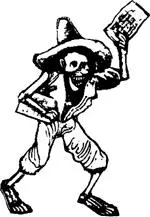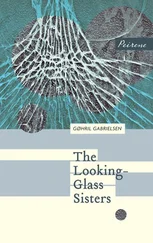Power keeps hacking away at the weeds, but it can’t pull out the roots without threatening itself. Criminals get sentenced but not the machine that keeps churning them out, just as drug addicts get sentenced but not the lifestyle that cries out for chemical consolation and an illusion of escape. Society is thus exonerated from responsibility. The law is like a spider’s web, says author Daniel Drew, spun to trap flies and other small insects, not to block the way of larger species. Over a century ago, the poet José Hernández compared the law to a knife that never turns on those who wield it. Official speeches invoke the law as if it applied to everyone, not just to the unfortunates who can’t evade it. Poor criminals are the bad guys in this movie; rich criminals write the script and direct the action.
In other times, the police served an economic system that needed abundant docile labor. The justice system punished vagrants by forcing them into factories at bayonet point. That’s how European society industrialized the peasantry and managed to impose the work ethic in its cities. But today the question is how to impose the unemployment ethic. What mandatory obedience techniques are there to manage the growing multitudes who have no work or hope of ever getting any? What can be done to keep all those who have fallen overboard from trying to climb back in and capsizing the ship?
The raison d’être of the state today is the same as that of the financial markets that rule the world and produce nothing but speculation. Subcommandante Marcos, the spokesman for the Indians of Chiapas, described the process aptly: we are witnessing, he said, a striptease. The state takes off everything down to its underwear, that indispensable intimate garment which is repression. The moment of truth: the state exists only to pay the foreign debt and guarantee social peace.
The state murders by omission as well as commission. At the end of 1995, there were these items of news from Brazil and Argentina:
Crime by commission: the Rio de Janeiro military police killed civilians at eight times the rate of the previous year, and the police in Buenos Aires barrios hunted young people as if they were wild beasts.
Crime by omission: forty kidney patients lay dying in the town of Caruarú in northeast Brazil after a public hospital used polluted water for dialysis, while in Argentina’s northeast province of Misiones, pesticide-laced drinking water was producing babies with leprous lips and deformations of the spinal medulla.
In the favelas of Rio, women carry cans of water on their heads like crowns, while children fly kites in the wind as warnings that the police are coming. At carnival time, black-skinned queens and kings come down from the hills in wigs of white curls, collars of lights, silken coats. On Ash Wednesday, when carnival ends and the tourists depart, anyone still in costume gets thrown in jail. And every other day of the year, the state makes sure the plebeians who were monarchs for a moment toe the line.
At the beginning of the century there was only one favela in Rio. In the forties, by which time there were a few, writer Stefan Zweig paid them a visit and found neither violence nor sadness. Today, there are over five hundred favelas in Rio. Many working people live there, cheap hands who serve tables or wash cars and clothes and bathrooms in wealthy neighborhoods. There, too, live many who are shut out of any market, a number of whom find in drugs some income or relief. From the point of view of the society that created them, favelas are no more than a refuge for organized crime and the cocaine trade. The military police invade them frequently in Vietnam War — lookalike operations, and dozens of death squads work them as well. The dead — illiterate children of illiterates — are mostly black adolescents.

A century ago, the head of a reform school in Illinois concluded that one-third of his internees could not be redeemed. They were future criminals who loved the world, the flesh, and the Devil. It was not clear what could be done with them, but back then a few scientists like the Englishman Cyril Burt proposed fighting crime at the source by eliminating the poorest of the poor, “impeding the propagation of their species.” A hundred years later, the countries of the South treat the poorest poor as if they were toxic waste. The countries of the North export their dangerous industrial waste to the South, but the South can’t return the favor. What then can be done with its dangerous human waste that cannot be redeemed? Bullets do their best to impede “the propagation of their species,” and indeed the Pentagon, military vanguard of the world, says that the wars of the twenty-first century will require ever more specialized weapons for street riots and looting. In some cities of the Americas, like Washington and Santiago de Chile, as in many British cities, video cameras keep a watchful eye on the streets.
Let’s Tell It Like It Is
The first South American Police Congress met in Uruguay in 1979 under the military dictatorship. The congress decided to continue its work in Chile under the military dictatorship, “to benefit the high interests that sparkle along the path of the peoples of America,” as the final resolution put it.
The delegation from Argentina, also under military dictatorship, highlighted the role of the forces of order in the struggle against child and youth crime. Its report was eloquent, as only the police can be: “Although it may seem simplistic, to get to the root of the problem, to its essence in the animating substratum of its dynamism and evolution, we will state and reiterate that the minimal common base is family reality, which has little to do with the socioeconomic-cultural side.… Needy adolescents try to find models of identity in other subcultures (hippie, criminal, etc.), thereby causing an interruption in the socialization process.… The maintenance of public order transcends the interindividual level and, reaching the intraindividual level, takes up that unique and indivisible reality of the individual being and the social being.… If some minors have demonstrated conduct that could degenerate into inadequate behavior presenting an individual-social threat, they have been easily detected and reoriented, and the problem resolved.


Consumer society consumes people and things like so many shooting stars. Things made not to last die soon after birth, and more and more people are condemned from the moment they peek out of the womb. Abandoned children on the streets of Bogotá used to be called “gamines”; now they’re called “disposable kids” and they’re marked to die. In the technocratic language of the moment, the many nobodies are “economically inviable.” What fate awaits these human leftovers? The world invites them to disappear, saying, “You don’t exist because you don’t deserve to exist.” Official reality tries to ignore them: the fastest-growing slum in Buenos Aires is called Hidden City, while in Mexico City the barrios of tin and cardboard sprouting in gullies and garbage dumps are called “lost cities.”
Covenant House interviewed more than 140 orphans and abandoned children living on the streets of Guatemala City: all of them sold their bodies for coins, all had venereal disease, all sniffed glue or solvents. One morning in the middle of 1990, some of those children were talking in a park when several armed men took them away in a truck. One girl escaped by hiding in a garbage can. Four of their bodies turned up a few days later without ears, without eyes, without tongues. The police had taught them a lesson.
Читать дальше














